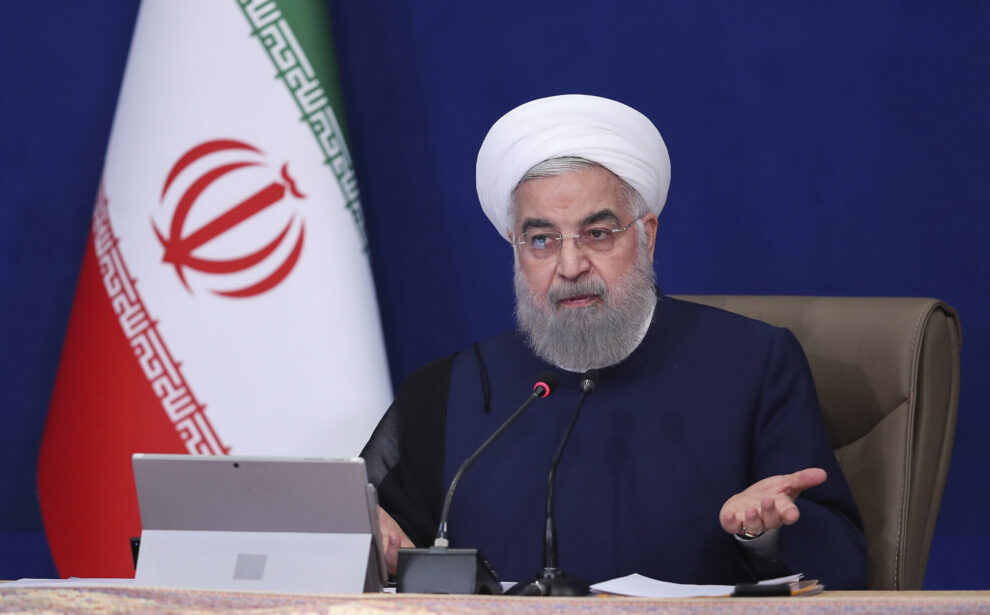Since the inauguration of Ebrahim Raisi as president of the Islamic Republic, Central Asia has been one of Iran’s foreign policy priorities. In the era of debates about Russia’s declining power and increasing competition between different actors such as China and Turkiye, Iran is following proactive diplomacy in Central Asia.
After being elected as president, Raisi thawed the ice between Tajikistan and Iran by making his first official presidential trip to Dushanbe; he became the first Iranian president to fly to Tashkent over the last two decades. He also met with Kazakh, Turkmen and Kyrgyz presidents on various occasions. Following these meetings, Iran signed a series of MoUs to encourage cooperation in trade, cultural exchange, agriculture and manufacturing with Central Asian countries.
One of the most important reasons for Iran’s turn to Central Asia is its growing isolation. At the global level, the deadlock in the nuclear negotiations with the US, and the EU’s announcement of new sanctions on Iran due to its military aid to Russia further increased the complexity of its relations with Western countries.
At a regional level, Turkiye’s recent de-escalation with Saudi Arabia, the United Arab Emirates (UAE), and especially Israel in the Middle East changed the regional balance of power and threatened Tehran’s ambitions in the region. While strengthening Azerbaijan-Turkiye ties and growing cooperation between Azerbaijan and Israel are further limiting Iran’s political capabilities and isolating it within the region.
Iran’s turn to Central Asia breaks its isolation, counterbalances Turkiye’s growing power in Central Asia, and increases its political power through its proxies such as the Fatemiyoun Brigade in Afghanistan.
Furthermore, increasing cooperation with Central Asian states will pave the way for Iran’s accession to the EAEU and the SCO, which is vital for regime survival to counter Western sanctions and political isolation. Iran has already been accepted as the newest member of the SCO in September, and its membership will likely be effective as of April 2023.
Central Asian countries play a crucial role in being a transit hub between the EU and China. The disruption of the northern corridor through Russia due to the war on Ukraine, creates opportunities for Tehran to attract cargo from the northern corridor and increase its strategic role through Eurasia trade.
Every tonne of goods that passes through Iranian territory costs approximately $100, close to the cost of a barrel of oil, which can bring significant economic benefits to the country.
In spite of these motivations for cooperation, there are limitations. First of all, despite the constructive political statements made by Central Asian presidents, there is considerable confusion about Iran at the public level. A Central Asia Barometer (CAB) poll conducted last May and June suggests that 52 per cent of Tajiks do not have an idea about Iran’s stance towards their country. This ratio for Uzbekistan, Kazakhstan, and Kyrgyzstan is 47 per cent, 30 per cent, 29 per cent, respectively. More importantly, the sum of those who view Iran in a “Very Unfavorable” and “Somewhat Unfavorable” manner is 41 per cent in Kazakhstan and 34 per cent in Kyrgyzstan.
This considerable confusion at the public level does not necessarily threaten future engagement with Iran, but it may create uncertainty in long-term partnership building.
However, do countries in Central Asia want to deal with a country which is under sanctions from global powers? Also, even though Iran has geopolitical leverage as a transit country, its physical infrastructure is outdated and overused. Because of the Western sanctions and the dominating presence of quasi-government institutions in the economy (Bonyads), international companies avoid investing in the country.
Many may think Iran’s 25-year Strategic Cooperation Agreement with China signed in 2021 can reverse this situation and renew its infrastructure quickly; it would not be a realistic assumption. It appears that China’s main motivation is bartering discounted oil in exchange for cheaper customer goods. Also, the Middle Corridor, which runs through Central Asia, the Caspian, Azerbaijan, Georgia and Turkiye, is rapidly developing as an alternative route with more capabilities to build better infrastructure more quickly.
In spite of the challenges, Iran is lively to continue to pursue greater ties with Central Asia, especially as its ports gain in strategic importance as the bulk of global trade shifts towards Eastern Asia, and as Russia’s war on Ukraine continues to rage. For Tehran, these ties are the best way to overcome sanctions and forge new paths of income.
Source : MEMO News















